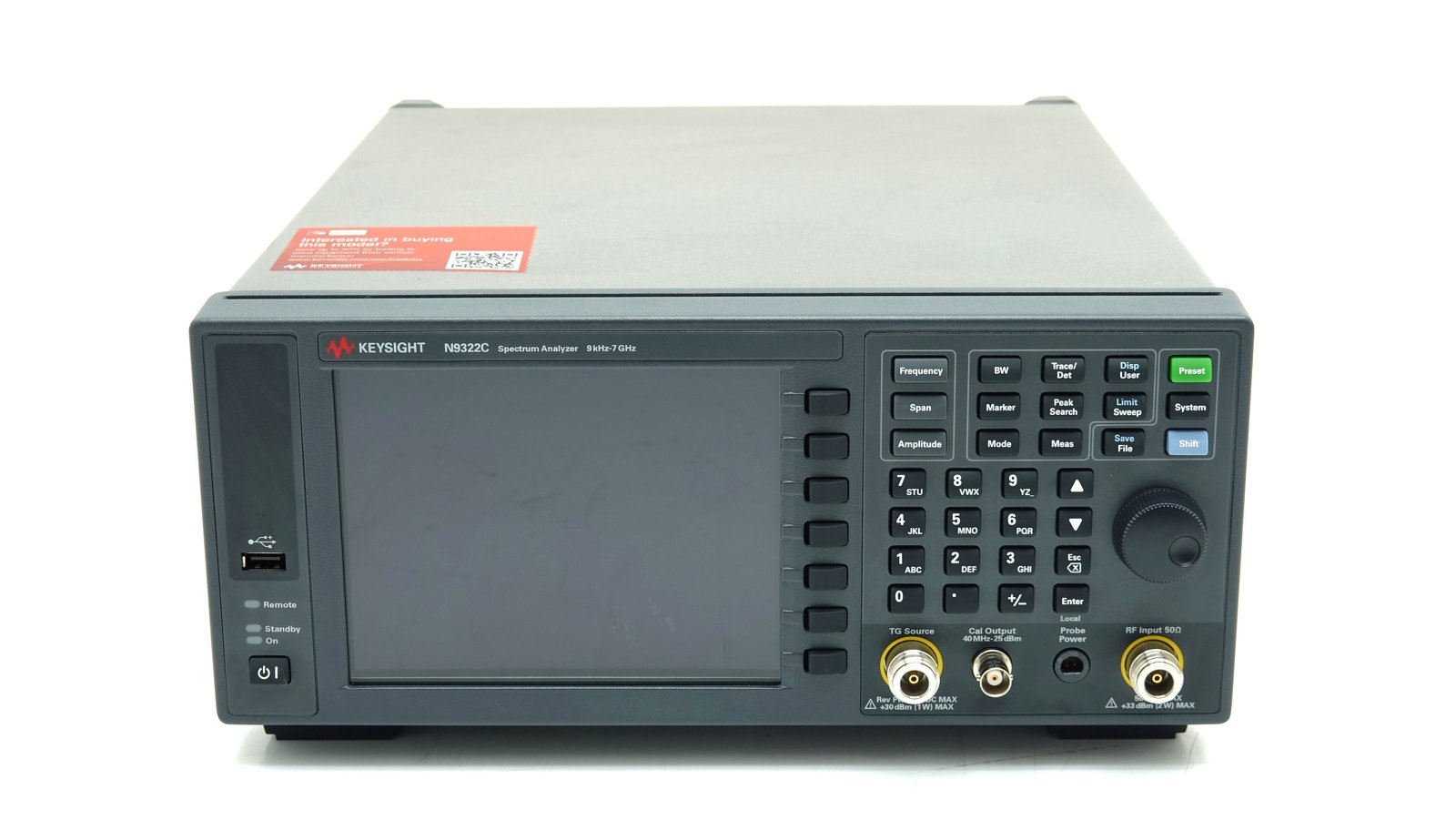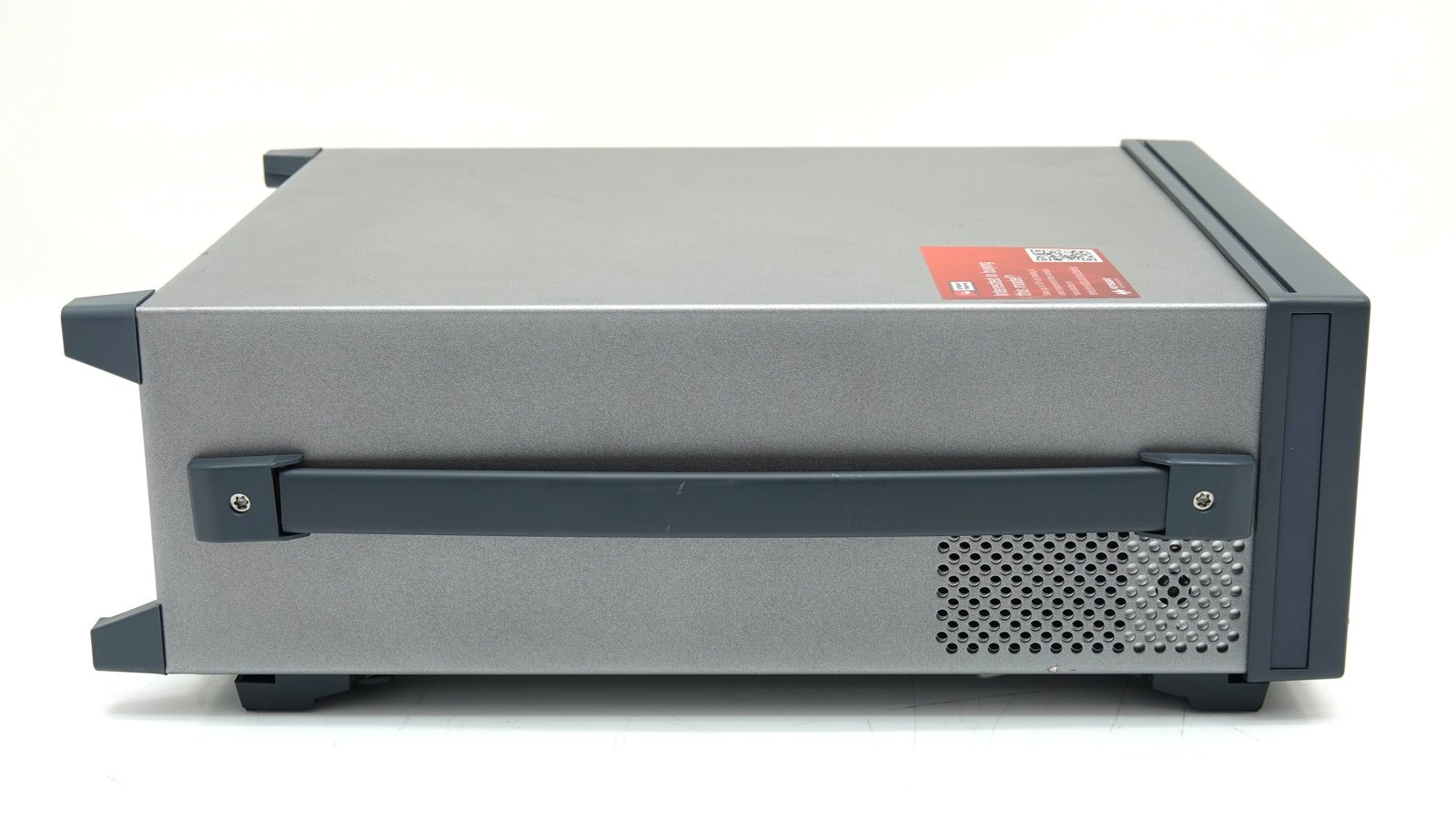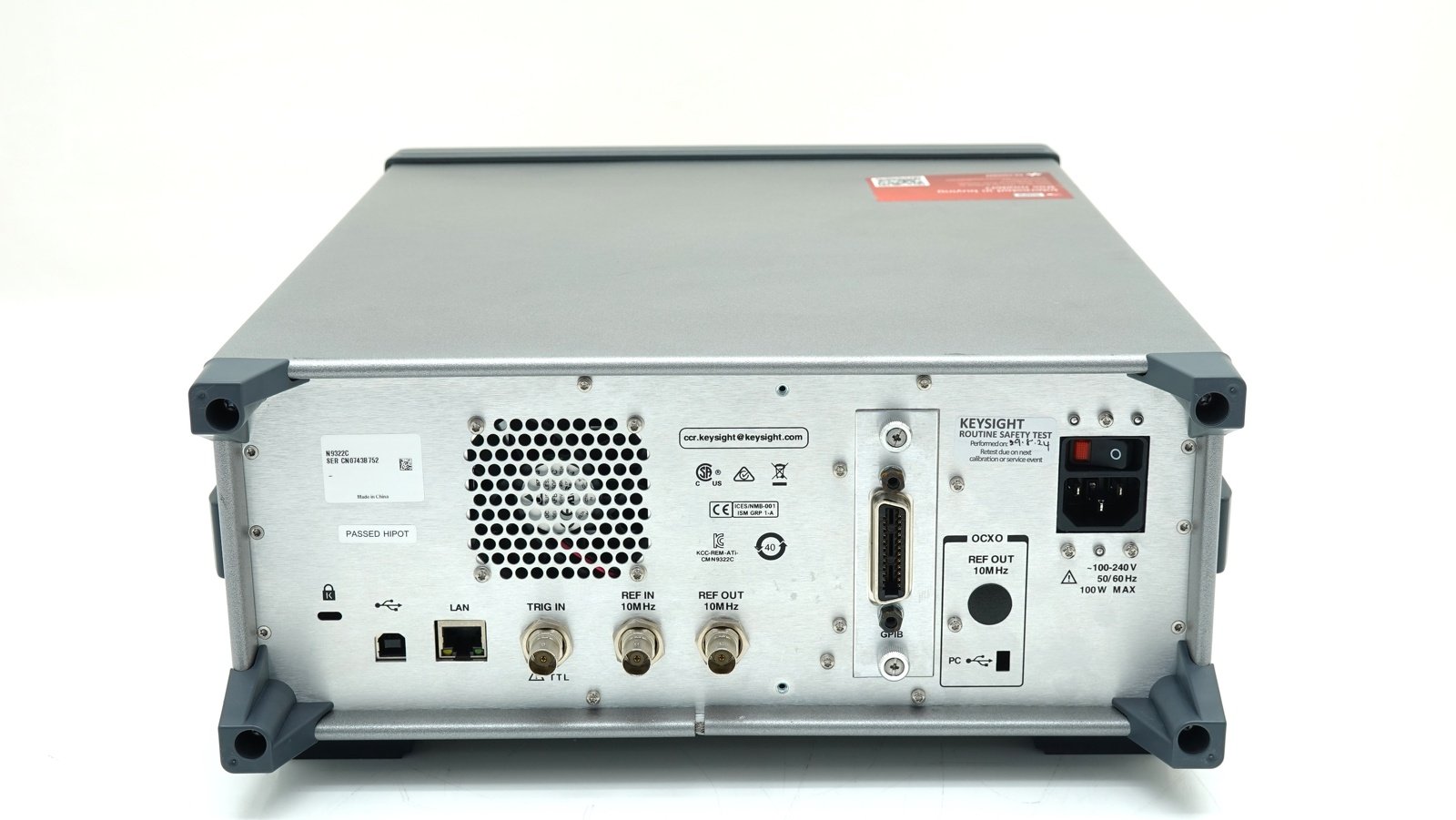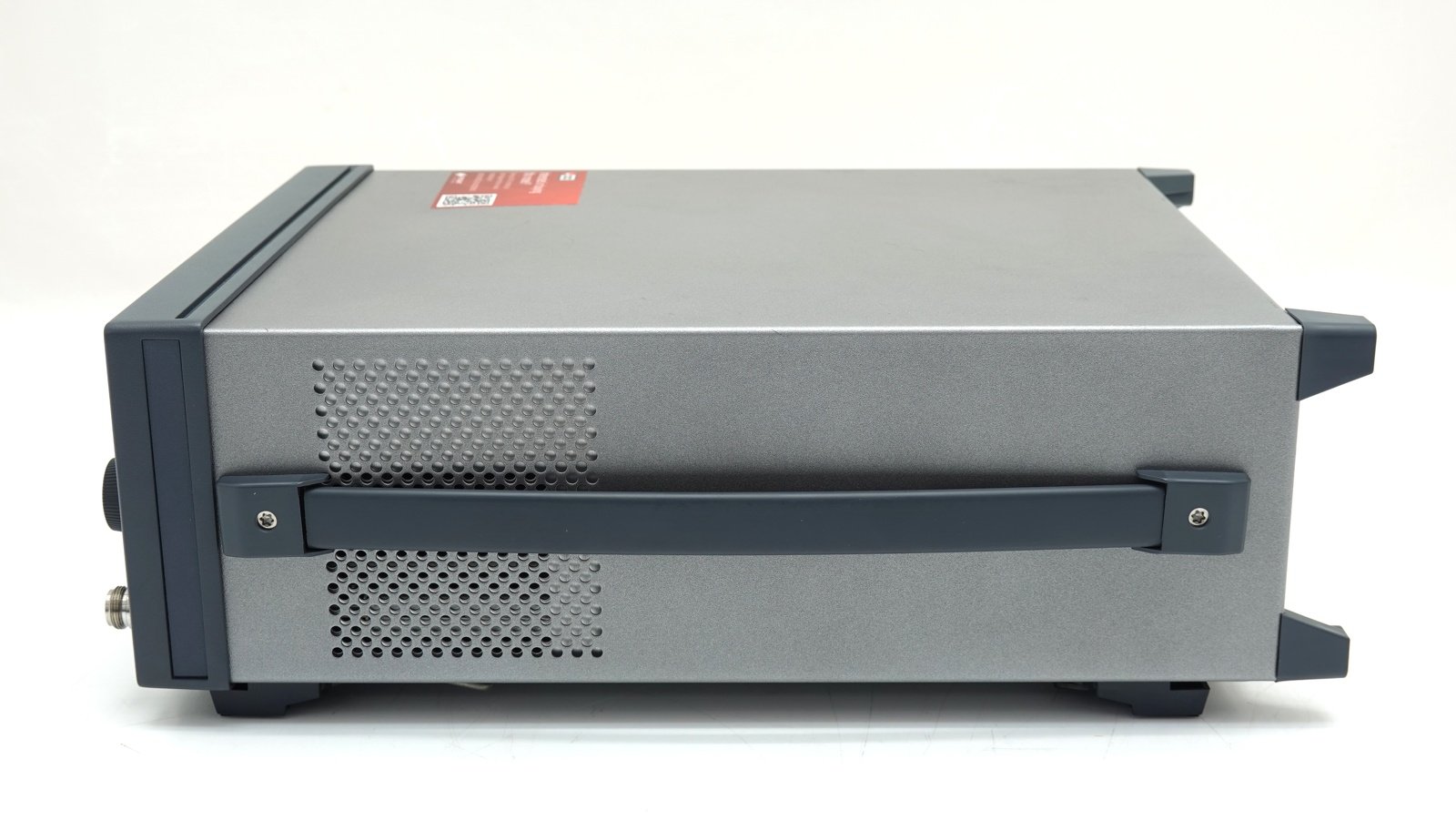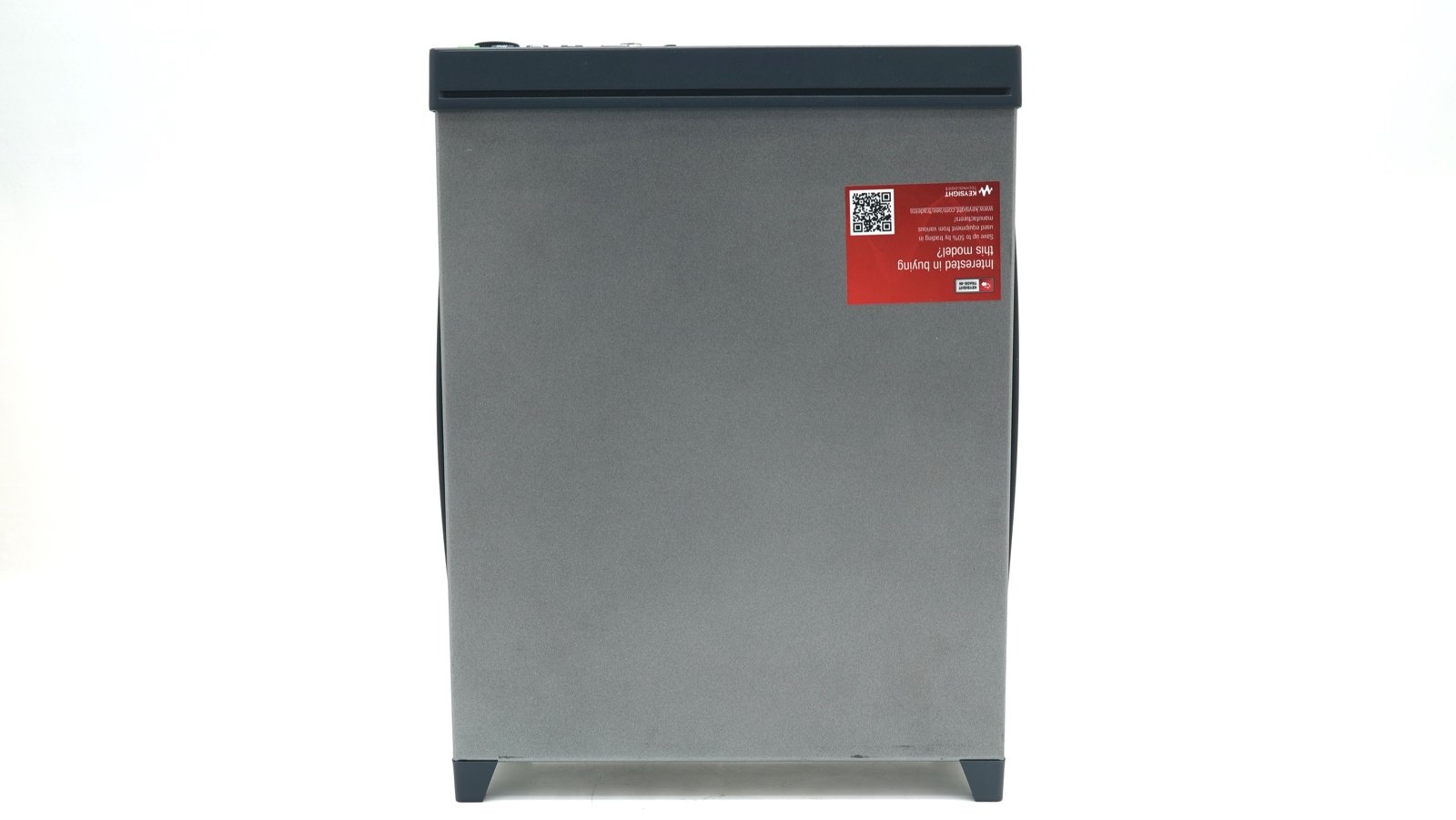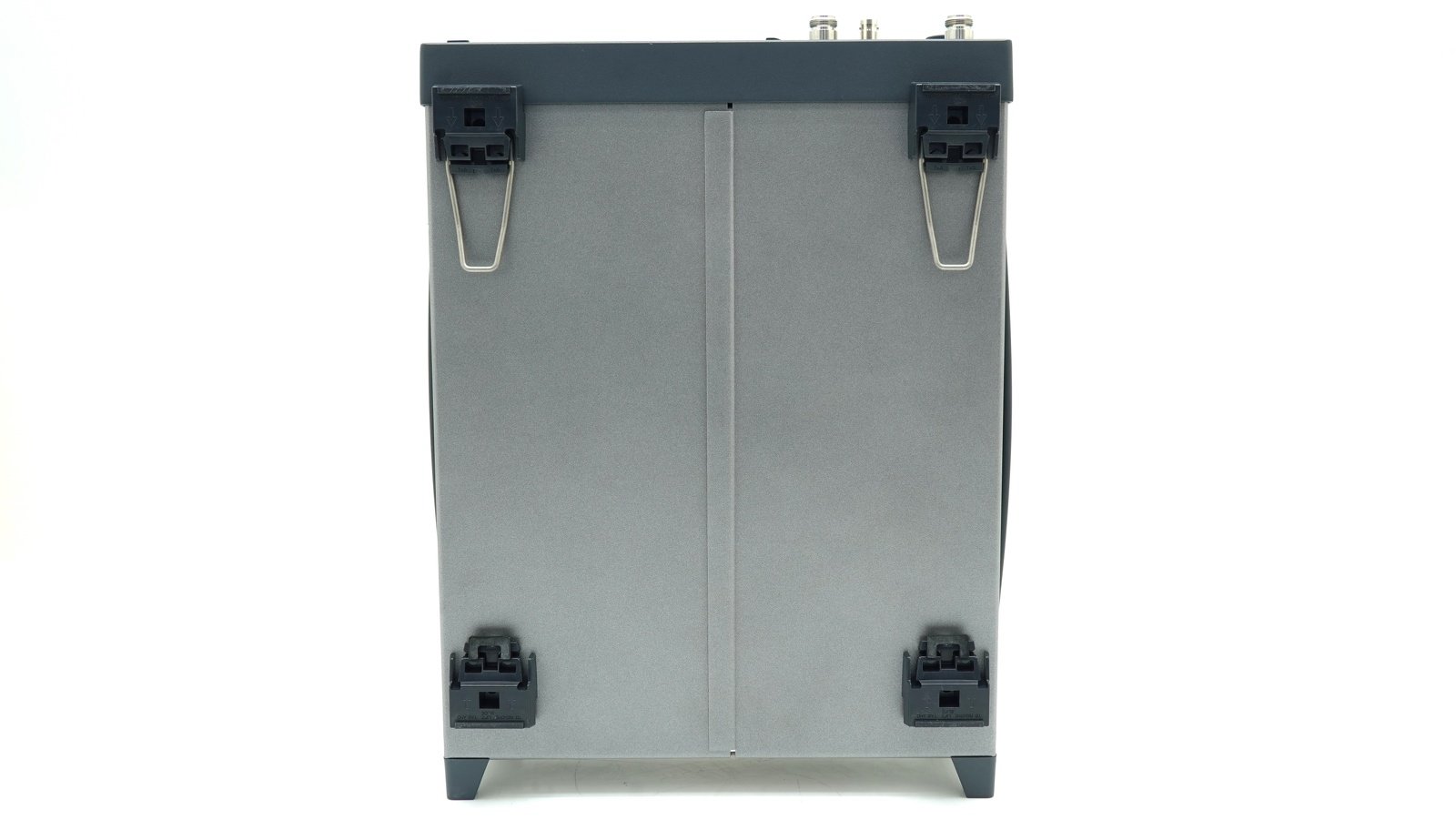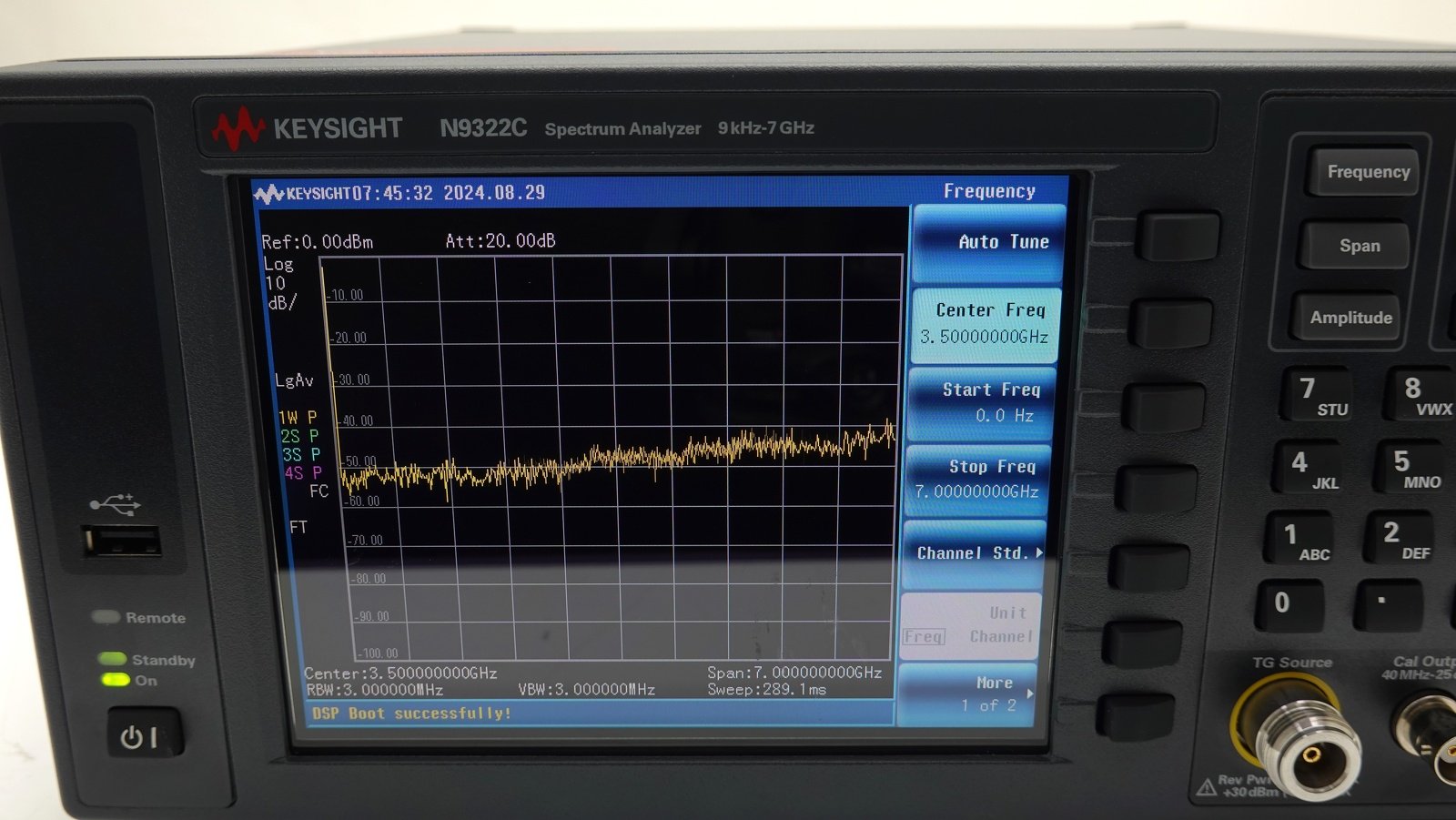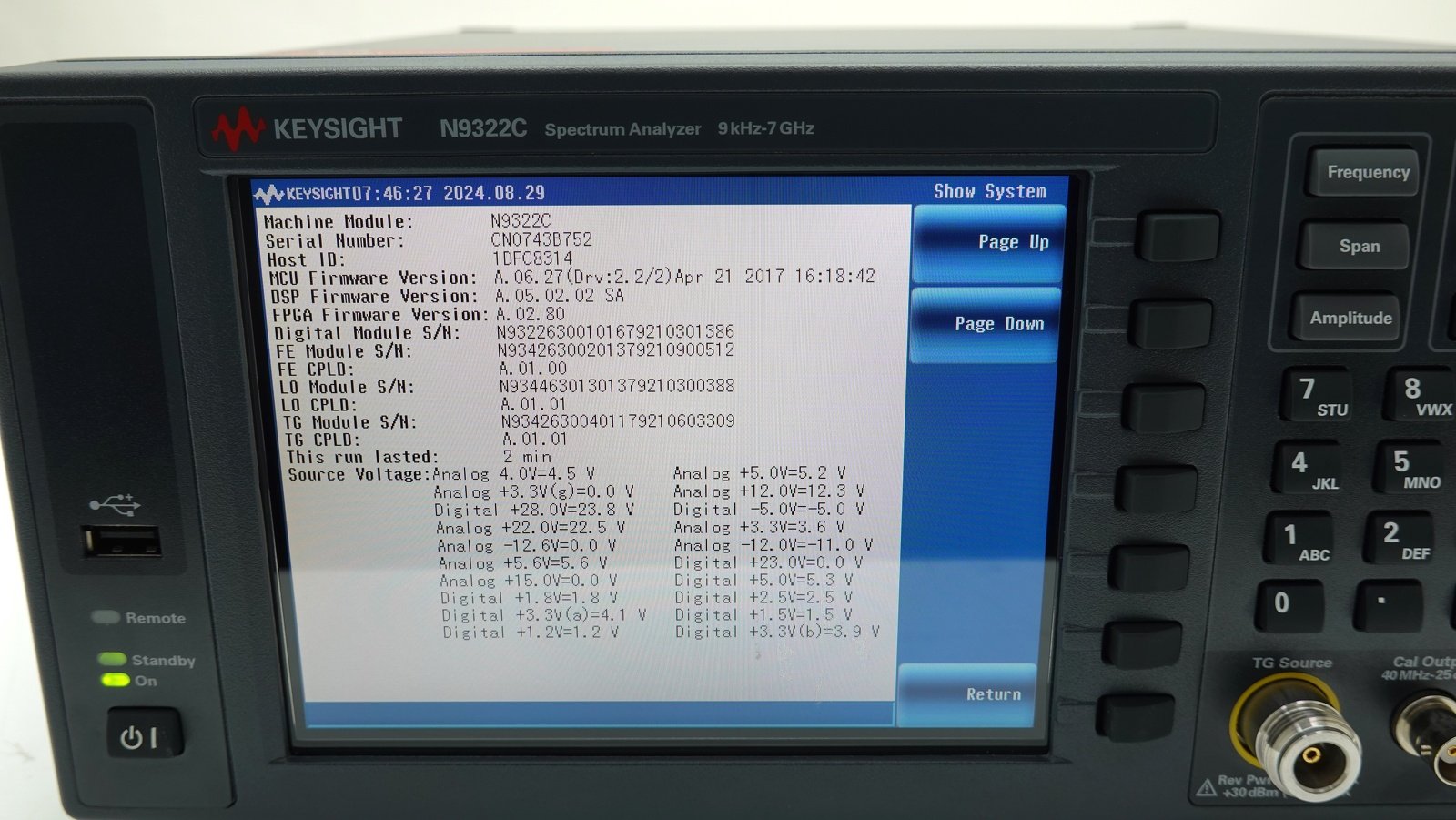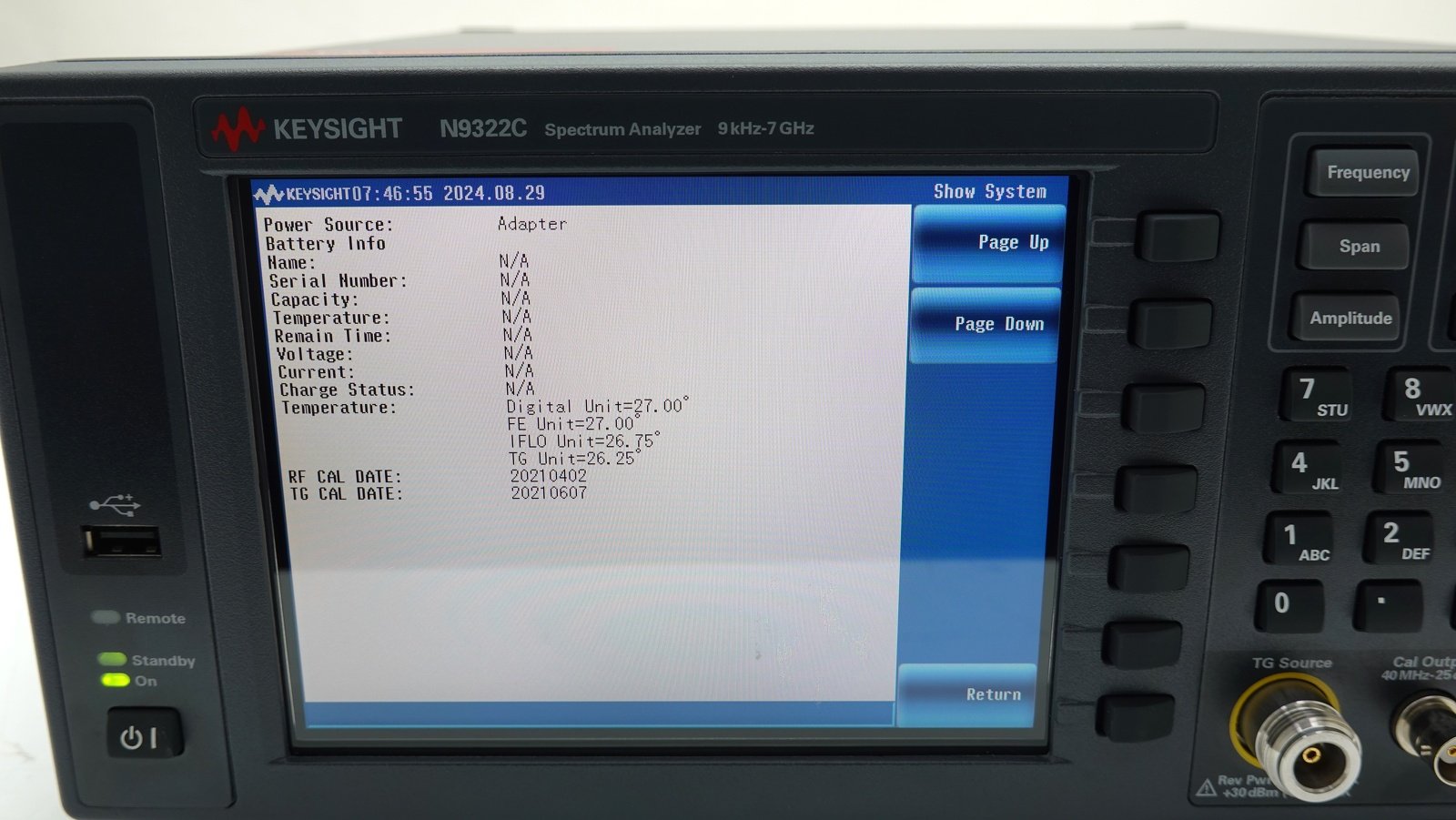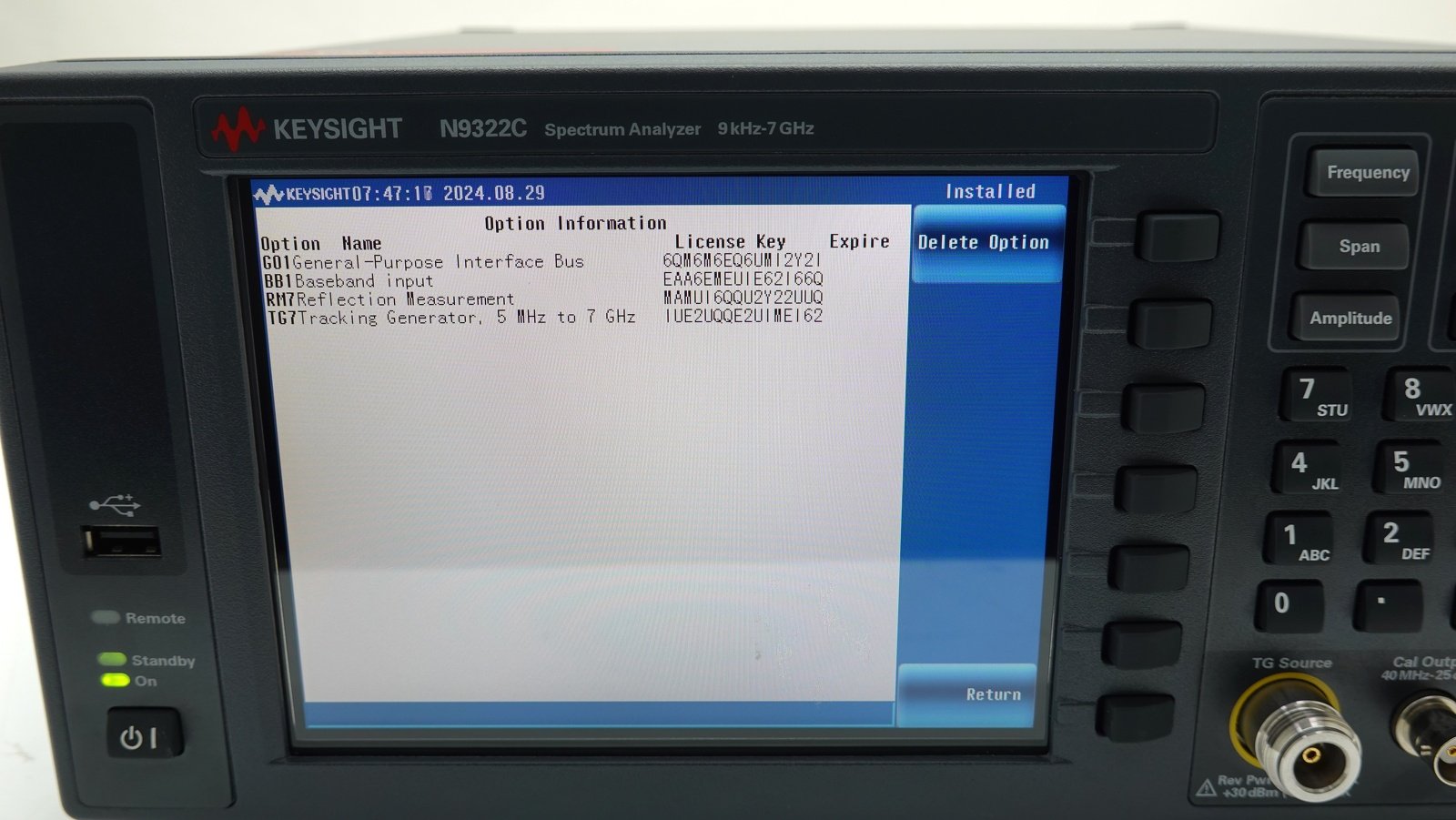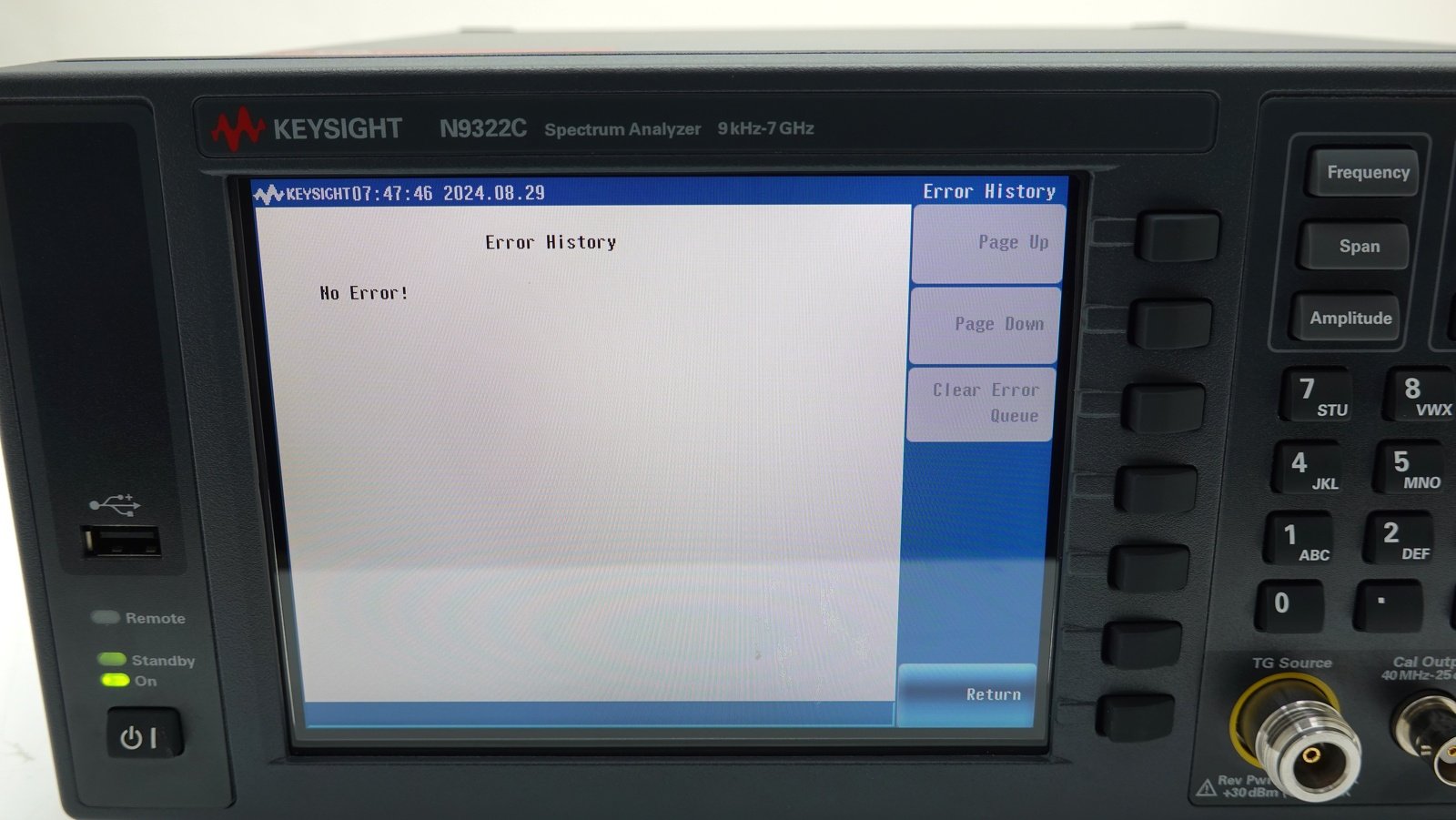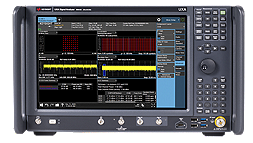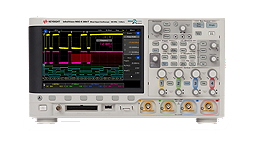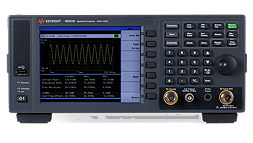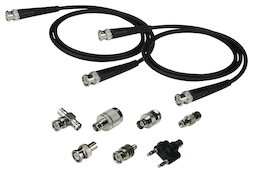Keysight N9322C
Basic Spectrum Analyzer (BSA) / 9 kHz to 7 GHz
AUD 14,355.71
List Price AUD 44,861.59
Cannot ship to:
European Union
Switzerland
Norway
Turkey
Unit only ships within China.
Unit ships worldwide.
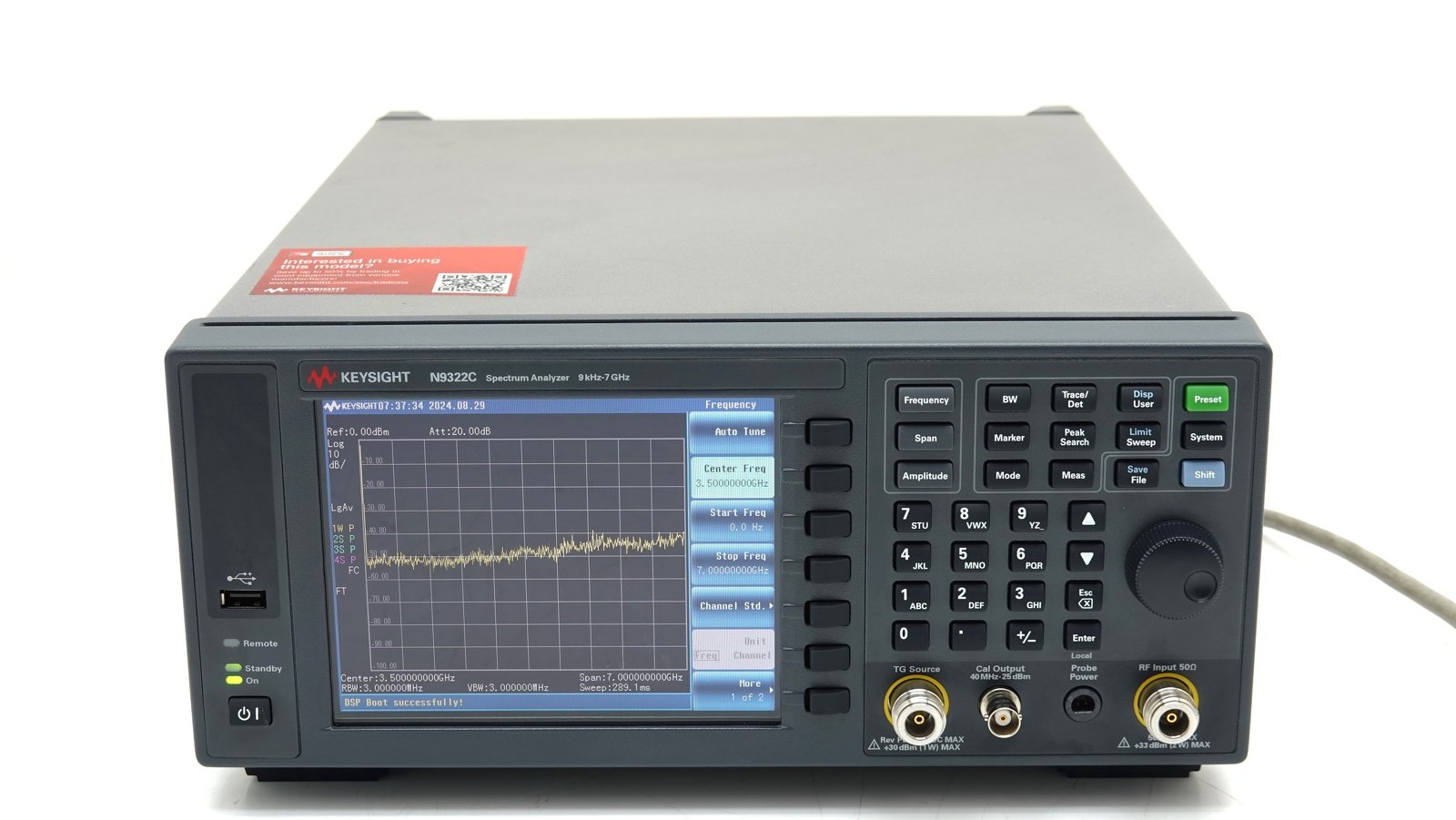
Keysight Used
Keysight N9322C AUD 14,355.71
From
AUD 14,355.71 Save 68%
| BB1 | Baseband input | Installed |
| G01 | GPIB INTERFACE | Installed |
| RM7 | Reflection measurement (requires option TG7) | Installed |
| TG7 | TRACKING GENERATOR, 7 GHZ | Installed |
Request a customized version of this model by requesting a Custom Quote
Get peace of mind only Keysight can offer. With KeysightCare Assured and manufacturer calibration.
| New Keysight Calibration before shipping* Extends lead time by <4 weeks | AUD 2,667.00 |
| KeysightCare Assured - 1 year incl. Keysight Extended Warranty | AUD 1,284.00 |
| KeysightCare Assured - 2 years incl. Keysight Extended Warranty | AUD 2,568.00 |
| KeysightCare Assured - 3 years incl. Keysight Extended Warranty | AUD 3,852.00 |
| KeysightCare Assured - 5 years incl. Keysight Extended Warranty | AUD 6,420.00 |
*If the unit is not yet calibrated (see listing), a calibration is required to purchase a KeysightCare plan.
Basic Spectrum Analyzer makes Higher Productivity Achievable on a Smaller Budget
The N9322C Basic Spectrum Analyzer defines value-priced, general-purpose instruments for the 9 kHz to 7 GHz frequency range. You can rely on the N9322C for proven testing efficiency, usability, and the flexibility to adapt to new requirements.
- 9 kHz to 7 GHz to frequency range
- Quickly uncover key insights through fast, value-priced, general purpose performance up to 7 GHz with -152 dBm DANL and ±0.6 dB overall amplitude accuracy
- Achieve straightforward and efficient operation with marker demodulation, one-button optimization, and user-definable soft keys
- Implement up to 20 pre-defined measurements automatically and reduce test setup time by 95% with the task planner feature
- Enjoy industry standard SCPI language support and USB and LAN connectivity
Accessories only included if shown in the pictures. No power cord included.
Other accessories that are not listed and included in the offer can be purchased separately at an extra cost with your purchase of a Keysight Used or Keysight Premium Used unit. Please specify in the comment field which additional accessories or support you are interested in.
For separate or post-purchase ordering, please contact your local Keysight office or Keysight Partner here. Or check our online store if available for your region here.

